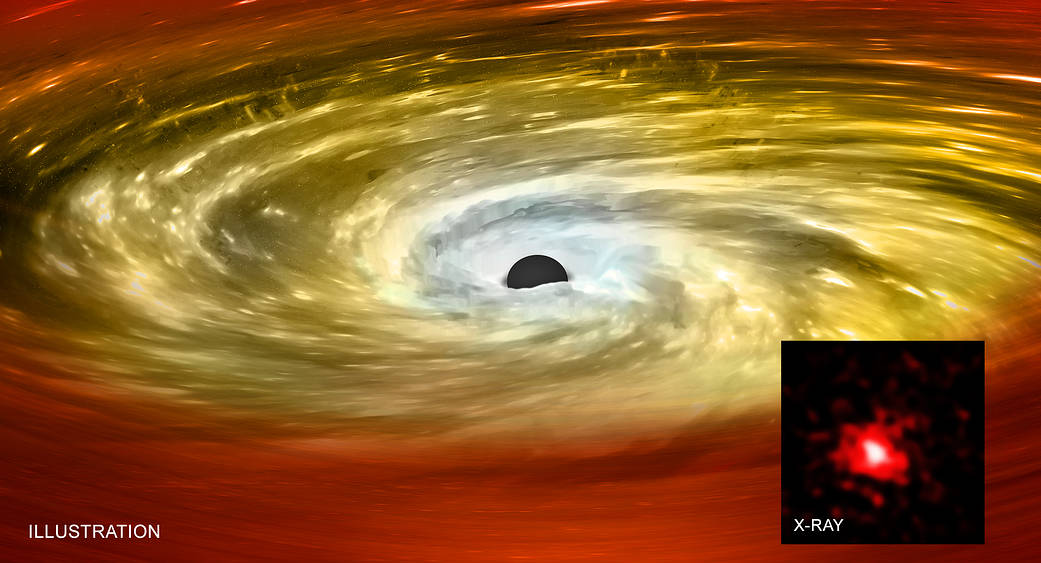A new study using data from NASA’s Chandra X-ray Observatory indicates that black holes have squelched star formation in small, yet massive galaxies known as “red nuggets”. The results suggest some red nugget galaxies may have used some of the untapped stellar fuel to grow their central supermassive black holes to unusually massive proportions.
Red nuggets are relics of the first massive galaxies that formed within only one billion years after the Big Bang. While most red nuggets merged with other galaxies over billions of years, a small number remained solitary. These relatively pristine red nuggets allow astronomers to study how the galaxies – and the supermassive black hole at their centers – act over billions of years of isolation.
In the latest research, astronomers used Chandra to study the hot gas in two of these isolated red nuggets, MRK 1216, and PGC 032673. (The Chandra data, colored red, of MRK 1216 is shown in the inset.) These two galaxies are located only 295 million and 344 million light years from Earth respectively, rather than billions of light years for the first known red nuggets, allowing for a more detailed look. The gas in the galaxy is heated to such high temperatures that it emits brightly in X-ray light, which Chandra detects. This hot gas contains the imprint of activity generated by the supermassive black holes in each of the two galaxies.
An artist’s illustration (main panel) shows how material falling towards black holes can be redirected outward at high speeds due to intense gravitational and magnetic fields. These high-speed jets can tamp down the formation of stars. This happens because the blasts from the vicinity of the black hole provide a powerful source of heat, preventing the galaxy’s hot interstellar gas from cooling enough to allow large numbers of stars to form.
A paper describing these results in the July 1st, 2018 issue of the Monthly Notices of the Royal Astronomical Society journal and is available online (http://lanl.arxiv.org/abs/1711.09983). The authors of the paper are Norbert Werner (MTA-Eötvös University Lendület Hot Universe and Astrophysics Research Group in Budapest, Hungary), Kiran Lakhchaura (MTA-Eötvös University), Rebecca Canning (Stanford University), Massimo Gaspari (Princeton University), and Aurora Simeonescu (ISAS/JAXA). NASA’s Marshall Space Flight Center in Huntsville, Alabama, manages the Chandra program for NASA’s Science Mission Directorate in Washington. The Smithsonian Astrophysical Observatory in Cambridge, Massachusetts, controls Chandra’s science and flight operations.
Credits: X-ray: NASA/CXC/MTA-Eötvös University/N. Werner et al., Illustration: NASA/CXC/M. Weiss
Read More from NASA’s Chandra X-ray Observatory.
For more Chandra images, multimedia and related materials, visit:



























